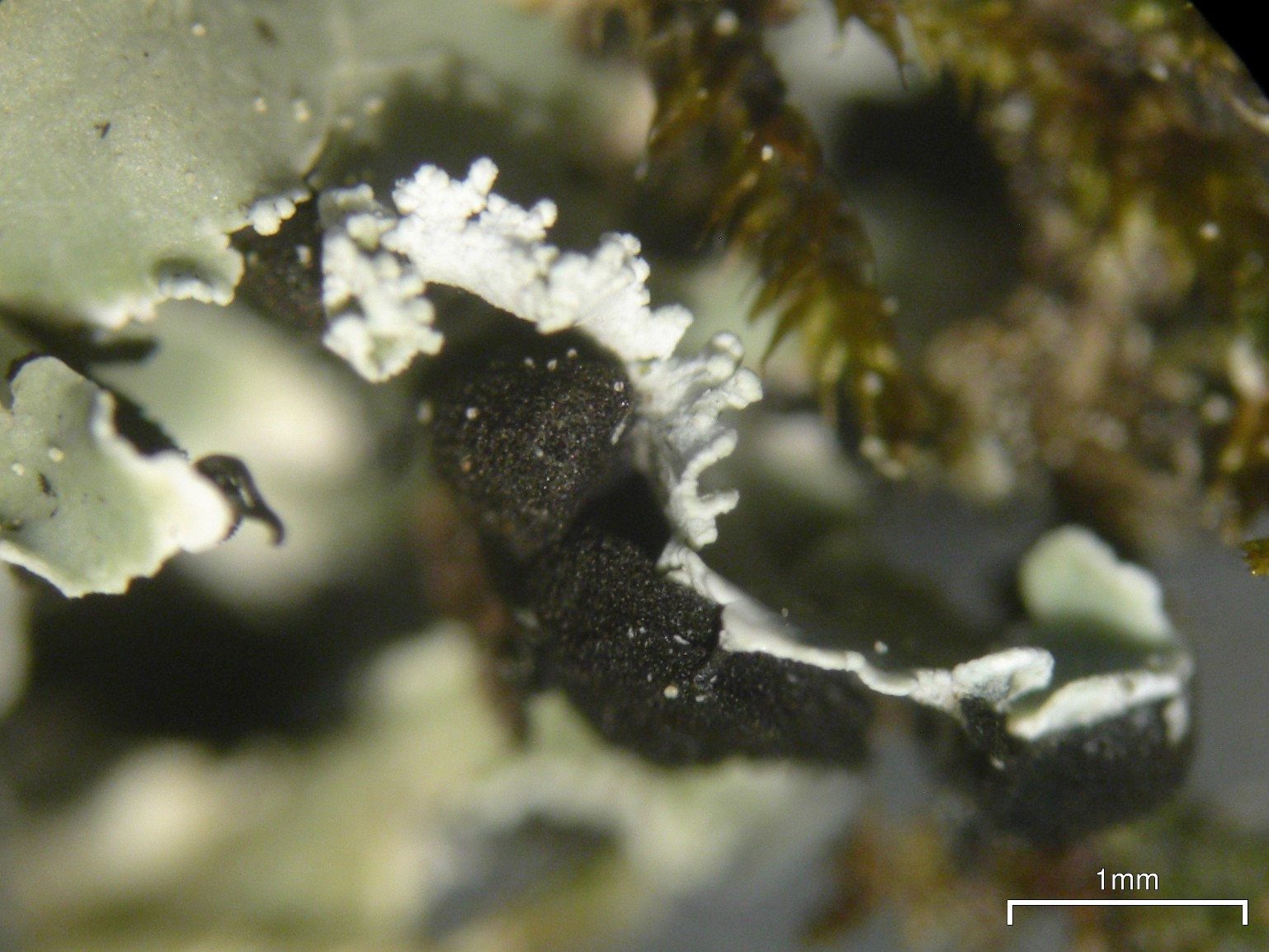Anzia on:
[Wikipedia]
[Google]
[Amazon]
''Anzia'' is a genus of foliose lichens known as black-foam lichens in the large family Parmeliaceae. It was formerly included in the monogeneric family Anziaceae, but this has since been subsumed into the Parmeliaceae.

 *'' Anzia centrifuga'' –
*'' Anzia centrifuga'' –
Taxonomy
The genus name of ''Anzia'' is in honour of Martino Anzi (1812-1883), an Italian botanist and professor of Theology from Como. The genus wascircumscribed
In geometry, the circumscribed circle or circumcircle of a polygon is a circle that passes through all the vertices of the polygon. The center of this circle is called the circumcenter and its radius is called the circumradius.
Not every polyg ...
by Ernst Stizenberger
Ernst Stizenberger (14 June 1827, in Konstanz – 27 September 1895) was a German physician and lichenologist.
He studied medicine at the University of Freiburg, afterwards furthering his medical training in Prague and Vienna. In 1851 he returned ...
in 1862, with '' Anzia colpodes'' assigned as the type species. This lichen was originally described as ''Lichen colpodes'' by Erik Acharius in 1799.
In 1932, Yasuhiko Asahina
Yasuhiko Asahina (朝比奈泰彦 ''Asahina Yasuhiko''; April 16, 1881 – June 30, 1975) was a Japanese chemist and lichenologist.
Early life
During his childhood, Asahina developed an interest in plants. In 1902, he enrolled in the School of ...
divided the genus into three sections
Section, Sectioning or Sectioned may refer to:
Arts, entertainment and media
* Section (music), a complete, but not independent, musical idea
* Section (typography), a subdivision, especially of a chapter, in books and documents
** Section sig ...
(''Simplices'', ''Duplices'', and Nervosae) based on the structure of the medulla. When Isao Yoshimura later observed that '' Anzia japonica'' had two medulla types in a single species (i.e. both a single-layered and a double-layered medulla), he combined sections ''Simplices'' and ''Duplices'' into section ''Anziae''.
Description
Members of ''Anzia'' have a foliose growth form, with a thallus that can measure anywhere from wide. The narrow lobes that comprise the thallus are pale greyish white to greyish green in colour. It is one of the only groups in the family not to have eight spores in eachascus
An ascus (; ) is the sexual spore-bearing cell produced in ascomycete fungi. Each ascus usually contains eight ascospores (or octad), produced by meiosis followed, in most species, by a mitotic cell division. However, asci in some genera or s ...
, but instead has numerous spores in each ascus (varying slightly from ascus to ascus). These ascospores are crescent shaped. A characteristic of the genus is the presence of a brown-black or pale brown spongy cushion called a spongiostratum, which covers the lower surface.
'' Pannoparmelia'' also has a spongiostratum, but in this genus the asci contain eight ascospores, and the upper cortex is yellow-green.
Distribution
The genus has acosmopolitan distribution
In biogeography, cosmopolitan distribution is the term for the range of a taxon that extends across all or most of the world in appropriate habitats. Such a taxon, usually a species, is said to exhibit cosmopolitanism or cosmopolitism. The ext ...
, but is concentrated in the Northern Hemisphere
The Northern Hemisphere is the half of Earth that is north of the Equator. For other planets in the Solar System, north is defined as being in the same celestial hemisphere relative to the invariable plane of the solar system as Earth's Nort ...
, particularly in Japan
Japan ( ja, 日本, or , and formally , ''Nihonkoku'') is an island country in East Asia. It is situated in the northwest Pacific Ocean, and is bordered on the west by the Sea of Japan, while extending from the Sea of Okhotsk in the north ...
.
Evolutionary history
A fossilized ''Anzia'', '' Anzia electra'', was found in 35–40Myr
The abbreviation Myr, "million years", is a unit of a quantity of (i.e. ) years, or 31.556926 teraseconds.
Usage
Myr (million years) is in common use in fields such as Earth science and cosmology. Myr is also used with Mya (million years ago). ...
-old Baltic amber. Its features suggest that the main distinguishing characteristics in the thallus morphology of section ''Anzia'' have been retained for tens of millions of years.
Species

 *'' Anzia centrifuga'' –
*'' Anzia centrifuga'' – Porto Santo
Porto Santo Island () is a Portuguese island northeast of Madeira Island in the North Atlantic Ocean; it is the northernmost and easternmost island of the archipelago of Madeira, located in the Atlantic Ocean west of Europe and Africa.
The muni ...
, Madeira
)
, anthem = ( en, "Anthem of the Autonomous Region of Madeira")
, song_type = Regional anthem
, image_map=EU-Portugal_with_Madeira_circled.svg
, map_alt=Location of Madeira
, map_caption=Location of Madeira
, subdivision_type=Sovereign st ...
*'' Anzia colpodes'' (sack black-foam lichen)
*'' Anzia electra''†
*'' Anzia entingiana'' – New Zealand
*'' Anzia flavotenuis'' – Sri Lanka
*'' Anzia formosana''
*'' Anzia gallowayi'' – Australia
*'' Anzia hypoleucoides''
*'' Anzia hypomelaena'' – China
*'' Anzia isidiosa'' – New Guinea
*'' Anzia japonica'' – China; Japan
*'' Anzia leucobatoides'' – China
*'' Anzia mahaeliyensis'' – Sri Lanka
*'' Anzia minor''
*'' Anzia opuntiella'' – Asia
*'' Anzia ornata'' – Asia; North America
*'' Anzia pseudocolpota'' – China
*'' Anzia rhabdorhiza'' – China
*'' Anzia tianjarana'' – Australia
References
{{Taxonbar, from=Q4778460 Lecanorales genera Parmeliaceae Lichen genera Taxa described in 1861 Taxa named by Ernst Stizenberger